Whose Dystopia Is It Anyway?
Reason writers debate which fictional dystopia best predicted our current moment.

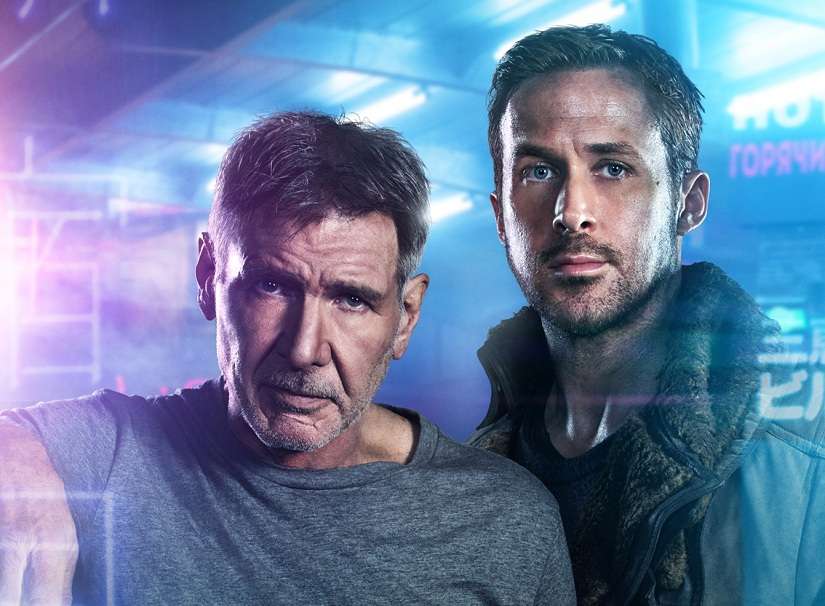
With social media platforms seemingly unable to distinguish Russian trolls from red-blooded Americans, the last two years have felt like a Deckardian purgatory. The frequency with which intellectual elites accuse their detractors of laboring on behalf of an always-approaching-never-arriving foreign power, meanwhile, smacks of Orwell. And if the proliferation of opioids in the American heartland doesn't sound like "delicious soma," what does? (Marijuana? Alcohol? Twitter?)
"We live in Philip K. Dick's future, not George Orwell's or Aldous Huxley's," George Washington University's Henry Farrell recently argued in the Boston Review. Despite being a poor prognosticator of what future technologies would look like and do, Dick, Farrell writes, "captured with genius the ontological unease of a world in which the human and the abhuman, the real and the fake, blur together."
But the universe of possibilities is much larger than just Orwell, Huxley, or Dick. Below, Reason's editorial staffers make the case for nearly a dozen other Nostradamii of the right now, ranging from Edgar Allan Poe to Monty Python's Terry Gilliam. As for why we're debating dystopias, and not utopias: Because there is no bad in a utopia, and because no dystopia could persist for long without at least a little good, it's safe to assume that if you're living in an imperfect world—and you very much are—it's a dystopian one.
Dick wasn't wrong, but Edgar Allan Poe got there first, writes Nick Gillespie:

At the core of Philip K. Dick's work is a profound anxiety about whether we are autonomous individuals or being programmed by someone or something else. In Do Androids Dream of Electric Sheep?, are the characters human or Nexus-6 androids? In The Three Stigmata of Palmer Eldritch and A Scanner Darkly, you're never quite sure what's real and what's the product of too much "Chew-Z" and "Substance D," hallucinogenic, mind-bending drugs that erode the already-thin line between reality and insanity.
Which is to say that Dick's alternately funny and terrifying galaxy is a subset of the universe created by Edgar Allan Poe a century earlier. Poe's protagonists—not really the right word for them, but close enough—are constantly struggling with basic questions of what is real and what is the product of their own demented minds.
This dilemma is front and center in Poe's only novel, The Narrative of Arthur Gordon Pym (1838), which tells the story of a stowaway who ships out on the Grampus and endures mutiny, shipwreck, cannibalism, and worse. It becomes harder and harder for Pym to trust his senses about the most basic facts, such as what side of a piece of paper has writing on it. The conclusion—not really the right word for the book's end, but close enough—dumps Pym's epistemological problem into the reader's lap in violent and hysterical fashion. A friend told me he threw the book across the room in disbelief when he read its final page, which anticipates the frustration so many of us feel while following the news these days. Just when you think reality can't get any stranger or less believable, it does exactly that, in both Poe's fictional world and our real one.
2018's turn toward hamfisted authoritarianism echoes Terry Gilliam's Brazil, says Christian Britschgi:

No-knock raids by masked, militarized, police officers. A ludicrously inefficient bureaucracy. Crackdowns on unlicensed repairmen. If all this sounds eerily familiar, you may have seen it coming in 1985's Brazil.
Set in a repressive near-future Britain, the film tells the story of lowly civil servant Samuel Lowry, who wants nothing more than to hide in the comically inefficient bureaucratic machine that employs him, all while doing his level best to quietly resist both a narcissistic culture demanding he rise higher, and a brutish security apparatus looking to punish anyone who steps out of line.
Directed by Monty Python alum Terry Gilliam, Brazil is surreal, ridiculous, and often just plain silly. Yet there is something chilling about the film's depiction of the state as a bumbling, byzantine bureaucracy that can't help but convert every aspect of life into an endless series of permission slips, reinforced by a system of surveillance, disappearance, and torture.
Evil and inefficiency are intimately intertwined in Brazil—with the whole plot set in motion by a literal bug in the system that sends jackbooted thugs to raid the wrong house and arrest the wrong man. While the regime in Brazil lacks a central, dictatorial figure at the top of the pyramid, there is definitely something distinctly current about the world it depicts, with every application of force complemented by an equal element of farce. Trump's first crack at imposing a travel ban, for instance, proved incredibly draconian and cruel precisely because of how rushed, sloppy, and incoherent the actual policy was.
Fortunately, our own world does manage to be far less authoritarian than the one depicted in Brazil and has mercifully better functioning technology as well. The parallels can still give one pause, however, when you consider what direction we might be headed in.
The current moment definitely tilts toward Ray Bradbury's Fahrenheit 451, says Eric Boehm:
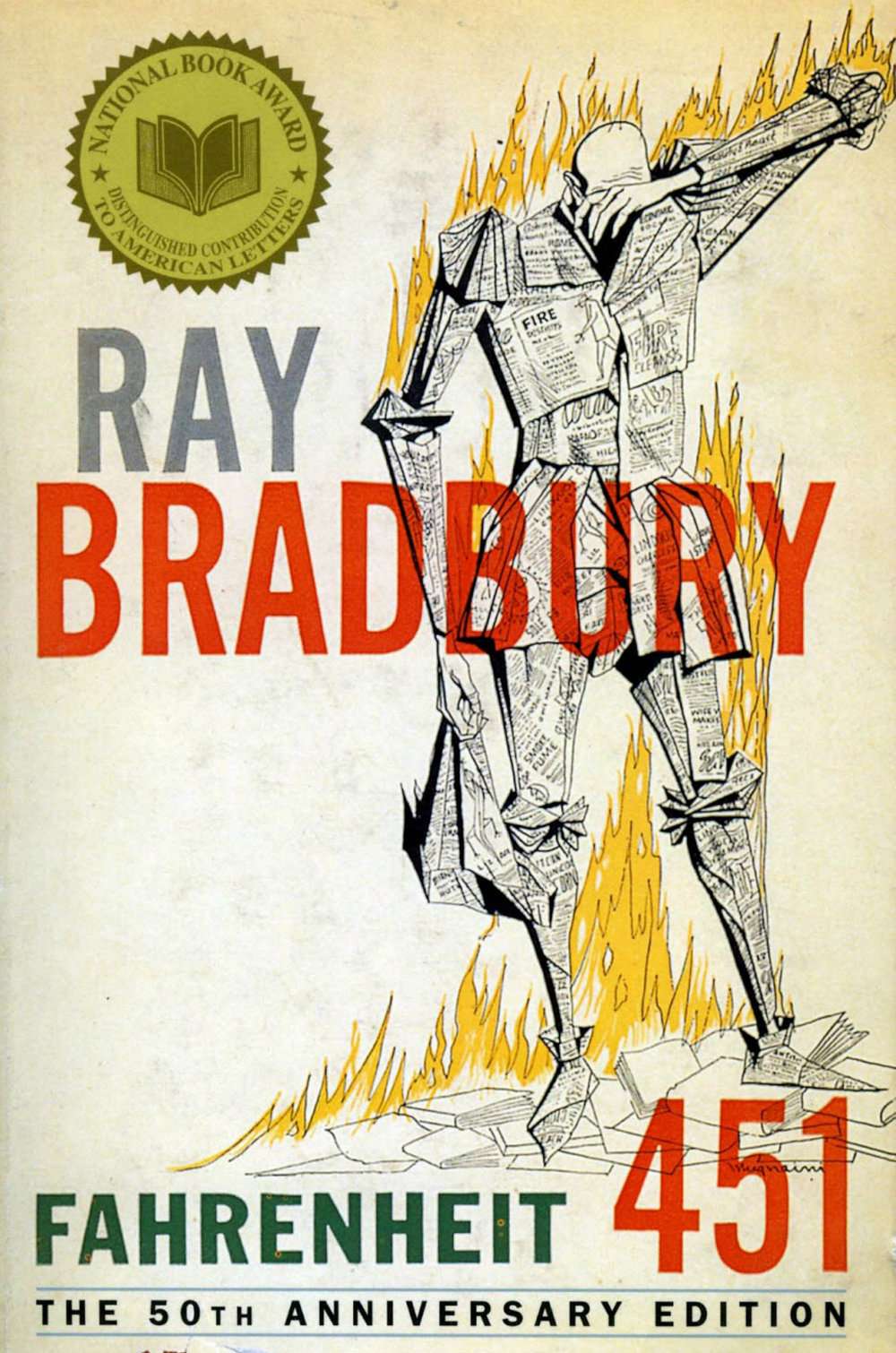
We are not living in a world where government agents raid homes to set books ablaze, but "there is more than one way to burn a book, and the world is full of people running about with lit matches," as Ray Bradbury warned in a coda appended to post-1979 editions of his 1953 classic.
Specifically, Bradbury was warning about the dangers of authoritarian political correctness. In that coda, he relates anecdotes about an undergrad at Vassar College asking if he'd consider revising The Martian Chronicles to include more female characters, and a publishing house asking him to remove references to the Christian god in a short story they sought to reprint.
More generally, though, Bradbury was commenting on the common misunderstanding of Fahrenheit 451 as a story about an authoritarian government burning books. It is that, of course, but it's really about how cultural decay allows authoritarianism to flourish. It was only after people had decided for themselves that books were dangerous that the government stepped in to enforce the consensus, Guy Montag's boss tells him in one of the novel's best scenes. "Technology, mass exploitation, and minority pressure carried the trick," Captain Beatty explains. "Politics? One column, two sentences, a headline! Whirl man's mind around so fast…that the centrifuge flings off all unnecessary, time-wasting thought!"
In place of literature and high culture, Bradbury's dystopia has an eerily accurate portrayal of reality television. Montag's wife is obsessed with the "parlor family" who inhabit the wall-sized television screens in the living room, and clearly has a closer attachment to them than to her husband. The ubiquity of those screens—and how the government exploits them—is on full display near the end of the story, when Montag is on the lam for revolting against orders to burn books, and messages are flashed across every parlor screen in the city telling people to look for the dangerous runaway fireman.
We might not live in Montag's specific version of Bradbury's dystopia, but we exist somewhere on the timeline that leads there—which is exactly what Bradbury, and Captain Beatty, are trying to tell us.
Wrong book! We're really living in Neal Stephenson's Snow Crash, says Katherine Mangu-Ward:
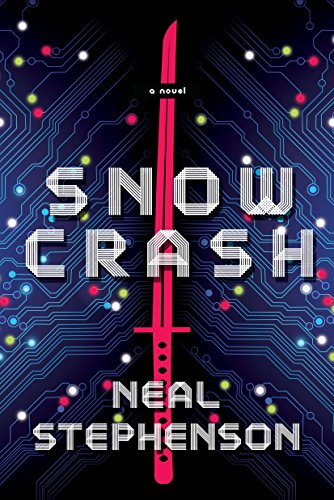
It's 1992. Computers are running Windows 3.1. Mobile phones are rare and must be carried in a suitcase. A few nerds in Illinois are getting pretty close to inventing the first web browser, but they're not quite there yet.
This is the year Neal Stephenson publishes Snow Crash, a novel whose action centers around a global fiber optic network, which can be accessed wirelessly via tiny computers and wearables. On this network, users are identifiable by their avatars, a Sanskrit word that Stephenson's novel popularized; those avatars may or may not be reliable indications of what they are like in real life. Many of the characters work as freelancers, coding, delivering goods, or collecting information piecemeal. They are compensated in frictionless micropayments, some of which take place in encrypted online digital currency. Intellectual property is the most valuable kind of property, but knowledge is stored in vast digital libraries that function as fully searchable encyclopedias and compendia. Plus there's this really cool digital map where you can zoom in and see anywhere on the planet.
Basically what I'm saying here is that every other entry in the feature is baloney. We are living in the world Neal Stephenson hallucinated after spending too much time in the library in the early 1990s. End of story.
Is it a dystopia? Sure, if you want to get technical about it: Our antihero, Hiro Protagonist (!), is beset by all manner of typical Blade Runner–esque future deprivations, including sub-optimal housing, sinister corporate villains, and a runaway virus that threatens to destroy all of humanity.
But in addition to the this-guy-must-have-a-secret-time-machine prescience of the tech, the book offers a gritty/pretty vision of anarcho-capitalism that's supremely compelling—when they're in meatspace, characters pop in and out of interestingly diverse autonomous quasi-state entities, and the remnants of the U.S. government is just one of the governance options.
Stephenson's semi-stateless cyberpunk vision is no utopia, that's for darn sure. But the ways in which it anticipated our technological world is astonishing, and I wouldn't mind if our political reality inched a little closer to Snow Crash's imagined future as well.
Katherine is off by three years. 1989's Back to the Future: Part II is actually the key to understanding 2018, says Robby Soave:
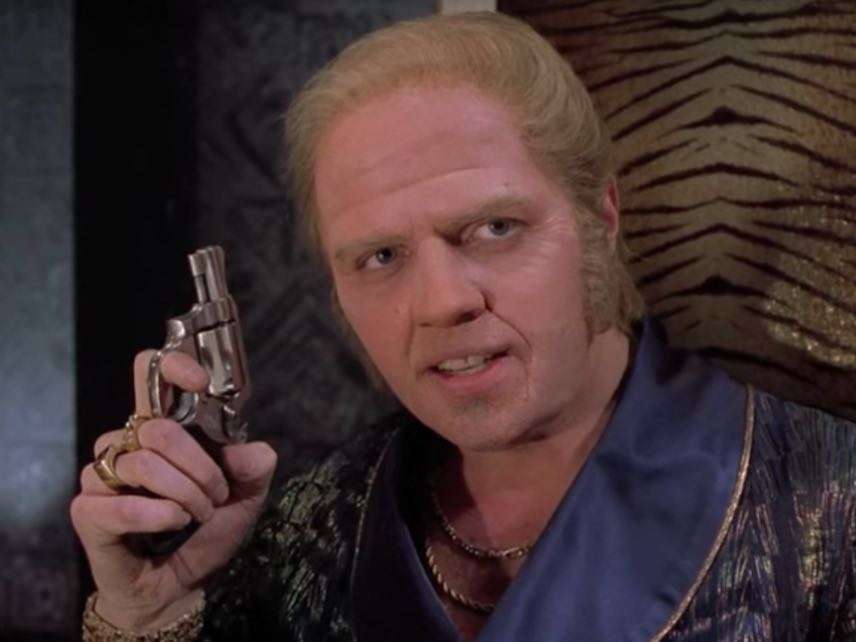
Back to the Future: Part II has always been the least-appreciated entry in the series: It's the most confusing and kid-unfriendly, lacking both the originality of the first film and the emotional beats of the third. But almost 30 years after its release, the middle installment of Robert Zemeckis's timeless time-travel epic is newly relevant: not for accurately depicting the future, but for warning us what life would be like with a buffoonish, bullying billionaire in charge.
2015, the furthest point in the future visited by Marty McFly and "Doc" Emmett Brown has come and gone, and we still don't have flying cars, hover boards, or jackets that dry themselves. But we do have a president who seems ripped from the film's alternate, hellish version of Hill Valley in 1985, where the loathsome Biff Tannen has become a powerful mogul after traveling into the past and using his knowledge of the future to rig a series of events in his favor.
The similarities between Trump and alternate-reality Biff are so numerous that Back to the Future writer Bob Gale has retroactively (and spuriously) claimed the 45th president as inspiration for the character. Biff buys Hill Valley's courthouse and turns it into a casino hotel. Biff is a crony capitalist who weaponizes patriotism for personal enrichment ("I just want to say one thing: God bless America"). Biff is a paunchy playboy with two supermodel ex-wives, a bad temper, and even worse hair. There's no escaping Biff: He's a media figure, a businessman, a civic leader, and even a member of the family.
"Biff is corrupt, and powerful, and married to your mother!" Doc Brown laments to Marty. Millions of Americans no doubt feel the same way about a man who similarly possesses the uncanny ability to commandeer our attention and insert himself into every facet of modern life. Sometimes it's hard to avoid the feeling that we're simply living through the wrong timeline—thanks, McFly.
We may not have hoverboards, but America is teeming with the legal "Orb" from Woody Allen's Sleeper, observes Todd Krainin:
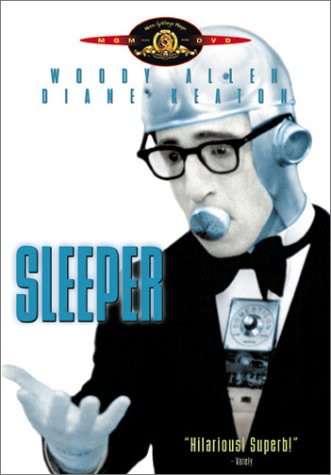
The world never recovered after Albert Shanker, president of the United Federation of Teachers, acquired a nuclear warhead. Two hundred years later, in the year 2173, the territory once known as the United States is ruled by The Leader, the avuncular figurehead of a police state that brainwashes, surveils, and pacifies every citizen.
Every citizen except for our hero, Miles Monroe. Cryogenically frozen in the late 20th century, Monroe is thawed out in the 22nd. As the only person alive with no biometric record, Monroe is essentially an undocumented immigrant from the past, making him the ideal secret weapon for an underground revolutionary movement.
"What kind of government you guys got here?" asks a bewildered Monroe, after learning the state will restructure his brain. "This is worse than California!"
Monroe's quest to take down the worse-than-Sacramento government takes him through a world that's amazingly prescient for a film that aims for slapstick comedy. He gets high on the orb (space age marijuana), crunches on a 15-foot long stalk of techno-celery produced on an artificial farm (GMOs), impersonates a domestic assistant (Alexa), and joins a crunchy underground (#Resist), in order to defeat The Leader (guess who).
Sleeper's most memorable invention is the Orgasmatron, a computerized safe space that provides instant climaxes for a frigid and frightened populace. It's basically the internet porn and sex robot for today's intimacy-averse millennials.
In the highpoint of the film, Monroe attempts to clone The Leader from his nose. This in a film released 23 years before real doctors cloned Dolly the sheep from the cell of a mammary gland.
By the film's end, Monroe is faced with the prospect of replacing The Leader with a revolutionary band of eco-Marxists. But some things never change.
"Political solutions don't work," he prophesies. "It doesn't matter who's up there. They're all terrible."
For a journalism outlet, we've been embarrassingly slow to recognize that Orson Scott Card's Ender's Game explains the media world we live in, argues Peter Suderman:

In a 2004 feature for Time, Lev Grossman explored of a new form of web-based journalism that was then radically reshaping both the political and media landscapes: blogs. Grossman profiled several bloggers, most of whom were young and relatively unknown, with little experience in or connection to mainstream journalism. Yet "blogs showcase some of the smartest, sharpest writing being published," Grossman wrote. In particular, bloggers were influencing some pretty big national conversations about U.S. military actions and politics.
From the vantage of 2018, all this might seem like old news: The mainstream media has adopted and amplified many blogging practices. But even in 2004, the idea of user-produced, semi-anonymous journalism, posted directly to the net with no editorial filter, had been in circulation for years as a sci-fi conceit—perhaps most prominently in Orson Scott Card's 1985 novel, Ender's Game.
In the book, a child genius named Ender Wiggin is sent to an orbiting military academy to prepare for a military invasion. While he's away, his adolescent siblings—themselves unusually gifted—hatch a plan to manipulate world politics by posting psuedononymous political arguments on "the nets." These essays are read by citizens and politicians alike, and both siblings develop powerful followings. Eventually, they help prevent the world from exploding into planetary war, and pave the way for mankind's colonial expansion into space.
Card's narrative was too compact, its assumptions about the influence of online writing too simplistic. But it previewed the ways in which the internet would expand the reach and influence of little-known writers—especially political pundits—who lack conventional journalistic training or credentials. Today's internet-based media landscape is neither a utopia nor a dystopia, but a lively, raucous, fascinating, and occasionally frustrating extrapolation of what Scott Card imagined before any of it existed in the real world.
This year is definitely one of Heinlein's "crazy years," says Brian Doherty:
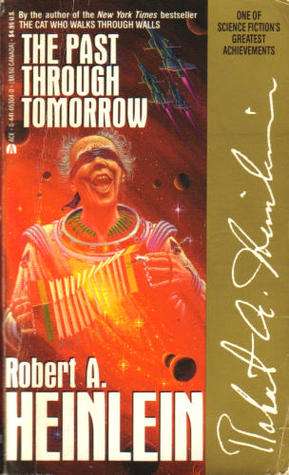
Robert Heinlein was one of the first science fiction writers to create a fictional structure that seemed to privilege prediction, with his "Future History" sequence, collected in the volume The Past Through Tomorrow.
Prediction was not Heinlein's purpose—storytelling was. But his "Future History" chart started off with the "Crazy Years": "Considerable technical advance during this period, accompanied by a gradual deterioration of mores, orientation, and social institutions, terminating in mass psychoses in the sixth decade, and the interregnum." Heinlein made this prediction in 1941, so the "sixth decade" meant the 1950s.
Did he really predict the Trump era? Heinlein fans have seen in wild ideological excesses on both left and right a clear sign that we are, collectively, losing our minds. Instapundit's Glenn Reynolds thinks we are certainly in Heinlein's Crazy Years, noting it's become a cliché among Heinlein fans to notice. He sees as evidence totemic but useless responses to policy crisis, and a social networking age that allows for tighter epistemic bubbles for information consumers and producers. Factually, the internet makes it stunningly easier for anyone to have opinions about politics and policy far better informed by accurate facts and trends than in any previous era. That so many might choose not to do so shows why predictions of "crazy years" can seem so eternally prescient: People can just be crazy (colloquially).
A lot of the "crazy" news these days that might lead to the never-witty declaration that it's "not The Onion" come from unusual personal qualities of our president; some come from excesses of the desire to control others' thought and expression. But if "crazy" means dangerous, then recent trends in crime domestically and wealth and health worldwide indicate we are mucking along well enough.
Indeed, as per the title of Heinlein's anthology, the past is tomorrow and probably always will be. That times of technologic advance will be followed by "gradual deterioration" (read: changes) in mores, orientation, and social institutions is the kind of golden prediction of the dystopia we eternally are moving in (and always moving through) with which it's hard to lose.
Loing before the 2016 Flyover Takeover, Walker Percy predicted a frayed nation would disassemble itself, writes Mike Riggs:
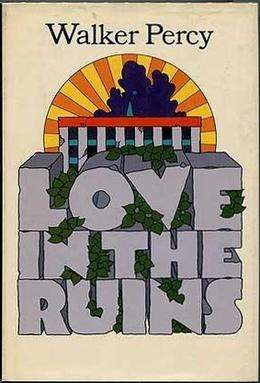
It's the 1980s, and liberals have taken "In God We Trust" off the penny, while "knotheads"—conservatives—have mired the U.S. in a 15-year war with Ecuador. Liberals love "dirty movies from Sweden," knotheads gravitate toward "clean" films, like The Sound of Music, Flubber, and Ice Capades of 1981. America's big cities, meanwhile, are shells of themselves. "Wolves have been seen in downtown Cleveland, like Rome during the black plague." Political polarization has even led to a change in international relations: "Some southern states have established diplomatic ties with Rhodesia. Minnesota and Oregon have their own consulates in Sweden."
Our guide through the social hellscape of Love in the Ruins is Thomas More, a descendant of Sir Thomas More (author of 1516's Utopia) and a lecherous Catholic psychiatrist with an albumin allergy who nevertheless chugs egg-white gin fizzes like water. A stand-in for Percy, More is a keen social taxonomist and a neutral party in the culture war. He notes that liberals tend to favor science and secularism; conservatives, business and God. But "though the two make much of their differences, I do not notice a great deal of difference between the two." In the bustling Louisiana town of Paradise, wealthy knotheads and wealthy leftists live side by side, in nice houses, with new cars parked in their driveways, just as they currently do in Manhattan, Georgetown, and Palm Beach. One group may go to church on Sundays, the other bird watching, but they are more like each other than they are the "dropouts from, castoffs of, and rebels against our society" who live in the swamp on the edge of town.
Yet even the wealthy must bear the brunt of social frisson. A local golf course magnate alternates between depression and indignation as the poor of Paradise challenge his decision to automate the jobs at his country club.
Love in the Ruins is the most radical timeline extending from the King assassination, Kent State, and the Tate Murders, three historical moments that helped undo the World War II–era fantasy—ever more childish in hindsight—of America as a cohesive unit. We were not one then, and are not now. Percy saw 2018 coming from a four-decade mile.
You are all wrong, says Jesse Walker:
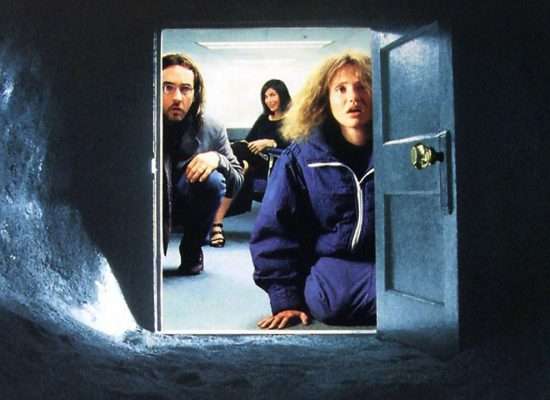
Identity has never been as fluid, fungible, and multiple as it is today. That guy you're arguing with on Twitter might actually be a crowd of people. That crowd of people you're arguing with might actually be just one guy. Trolls try on a persona for an hour, then discard it for something new. Bots adopt a persona and stick with it, but without an actual mind in command. Your identity might be stolen altogether, leaving you to learn that an entity that looks like you has been spending money, sending messages, or otherwise borrowing your life. You might even wake one day to discover that someone has inserted your head onto someone else's body, all so a stranger can live out a fantasy.
You can decide for yourself how much of that is a utopia and how much is a dystopia. All I know is that at some point we started living in Being John Malkovich.
Rent Free is a weekly newsletter from Christian Britschgi on urbanism and the fight for less regulation, more housing, more property rights, and more freedom in America's cities.


Show Comments (102)